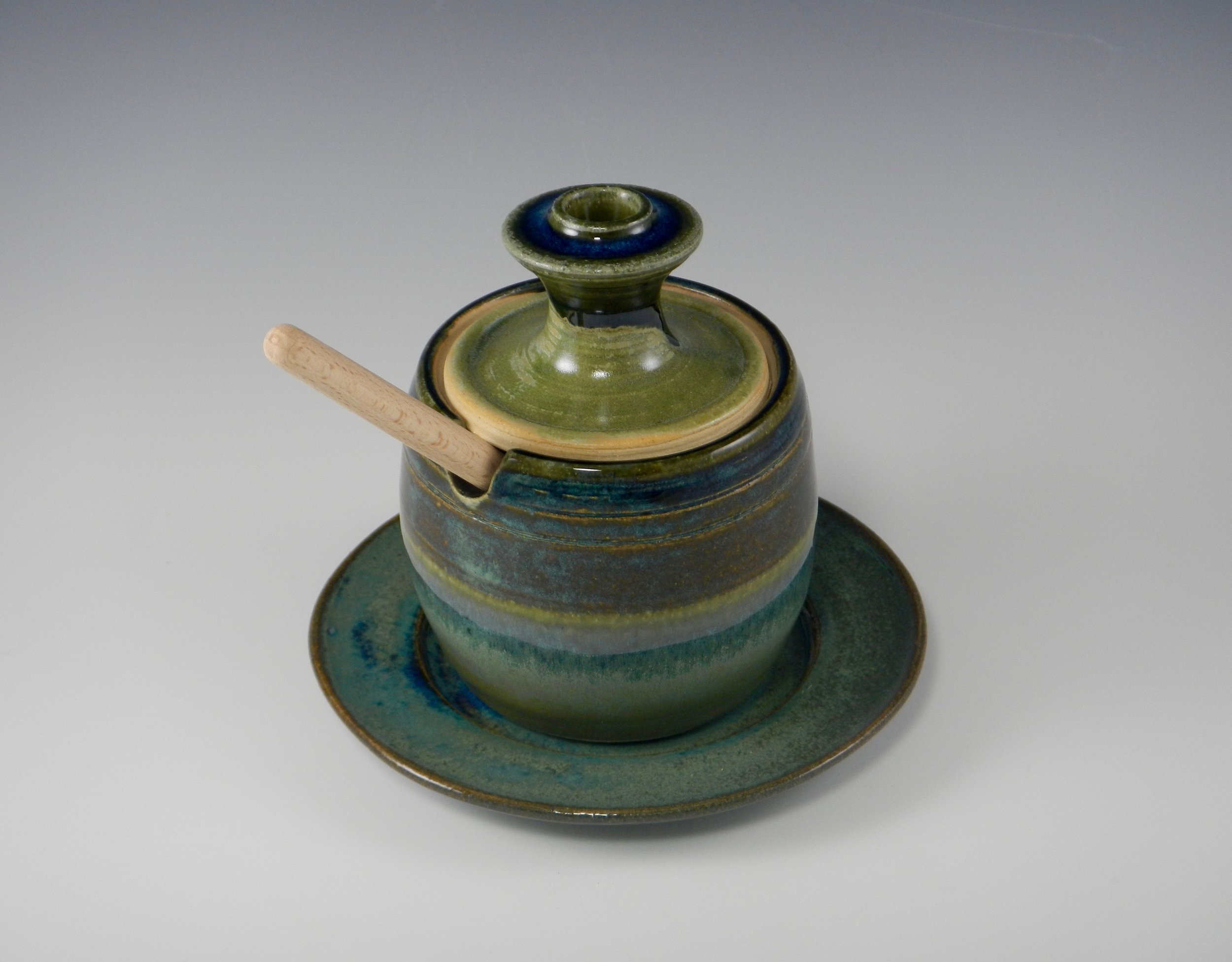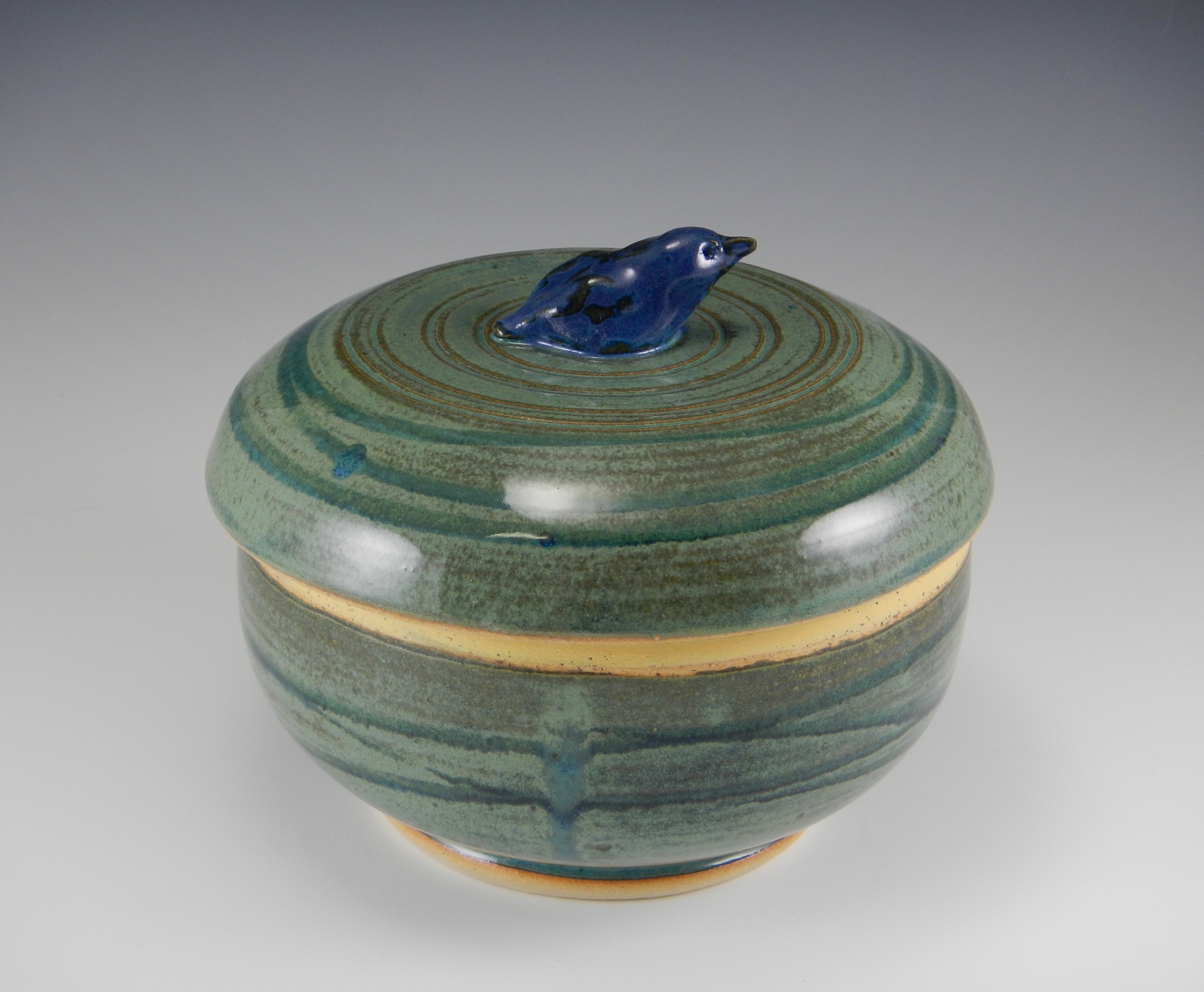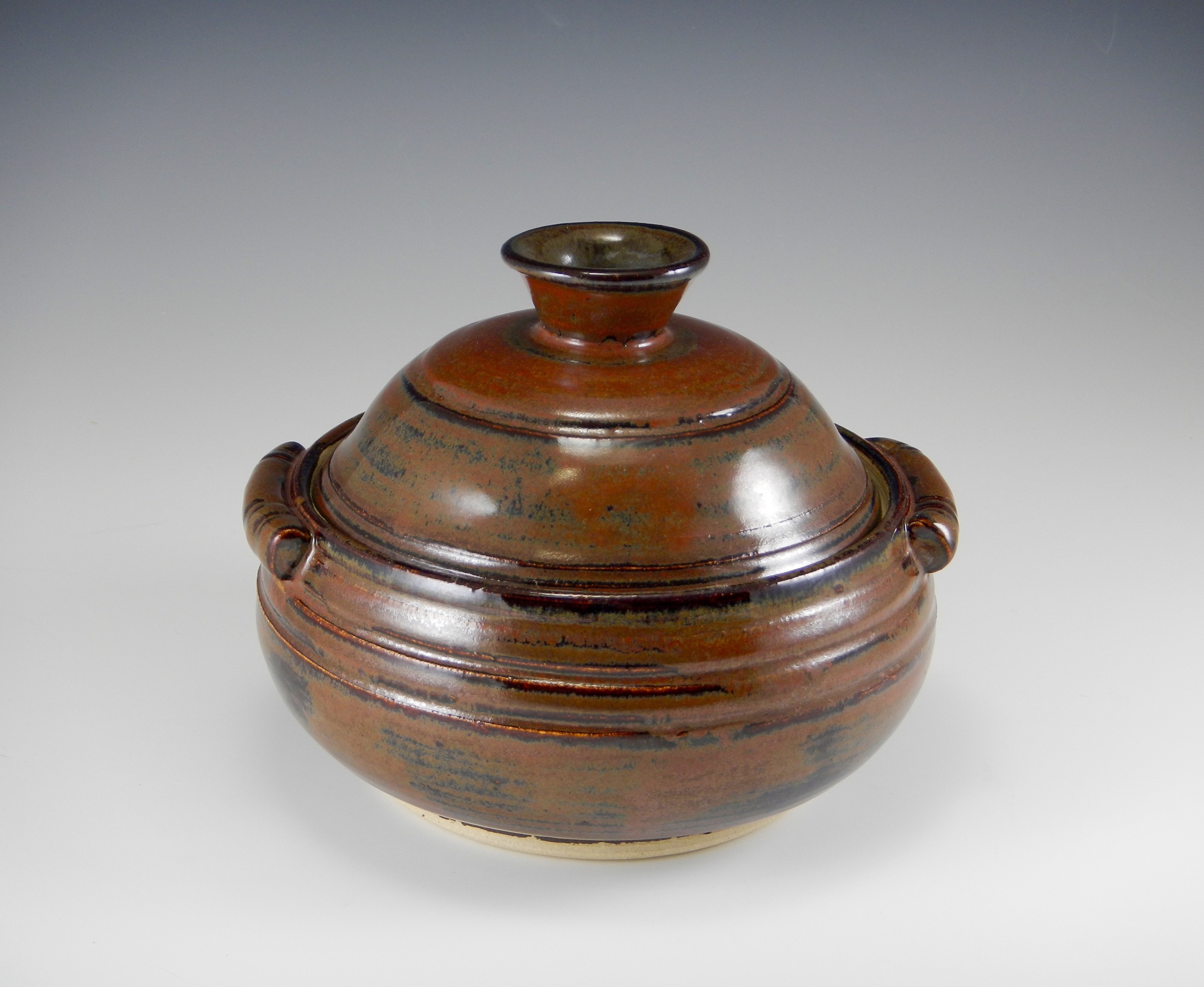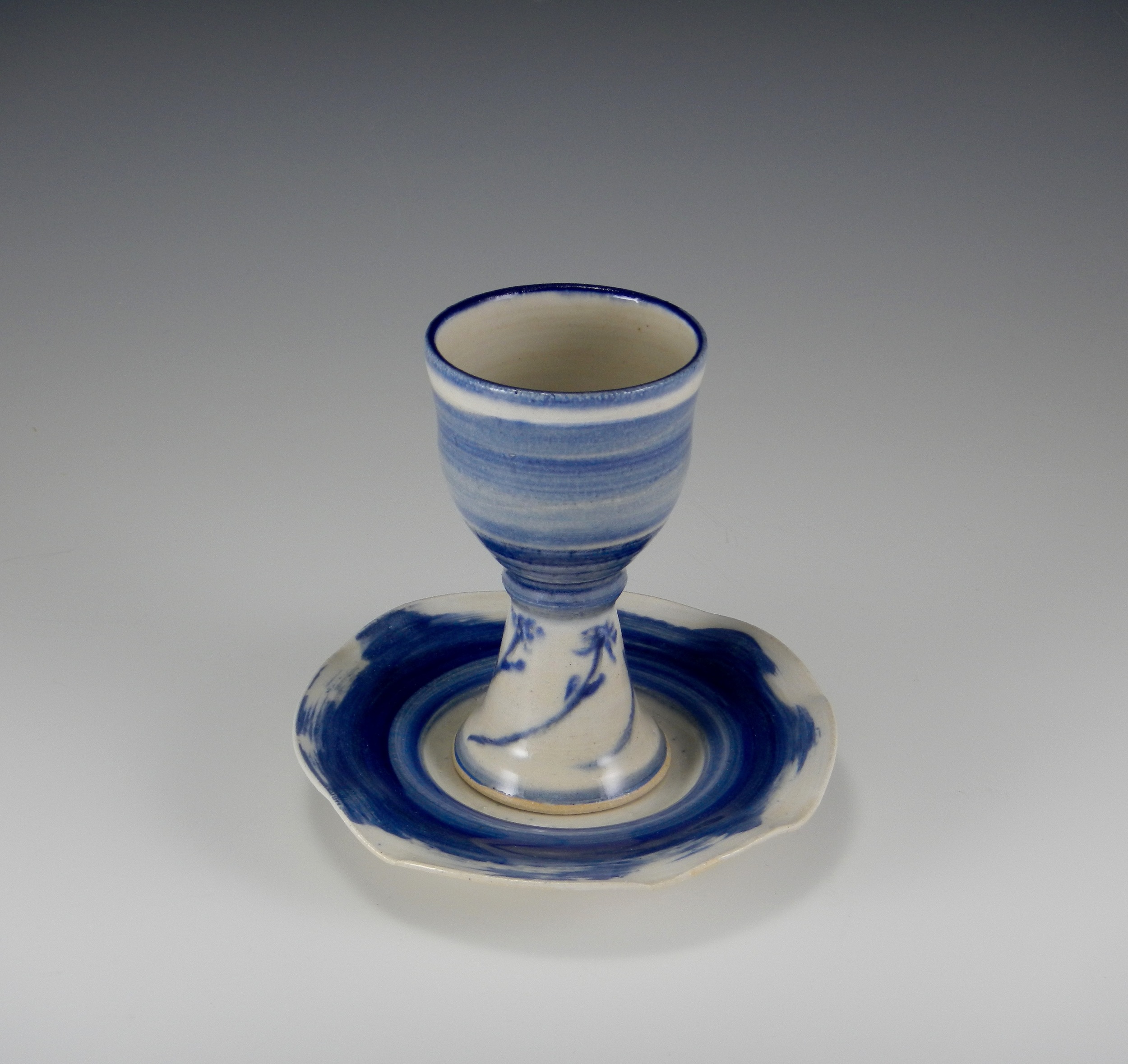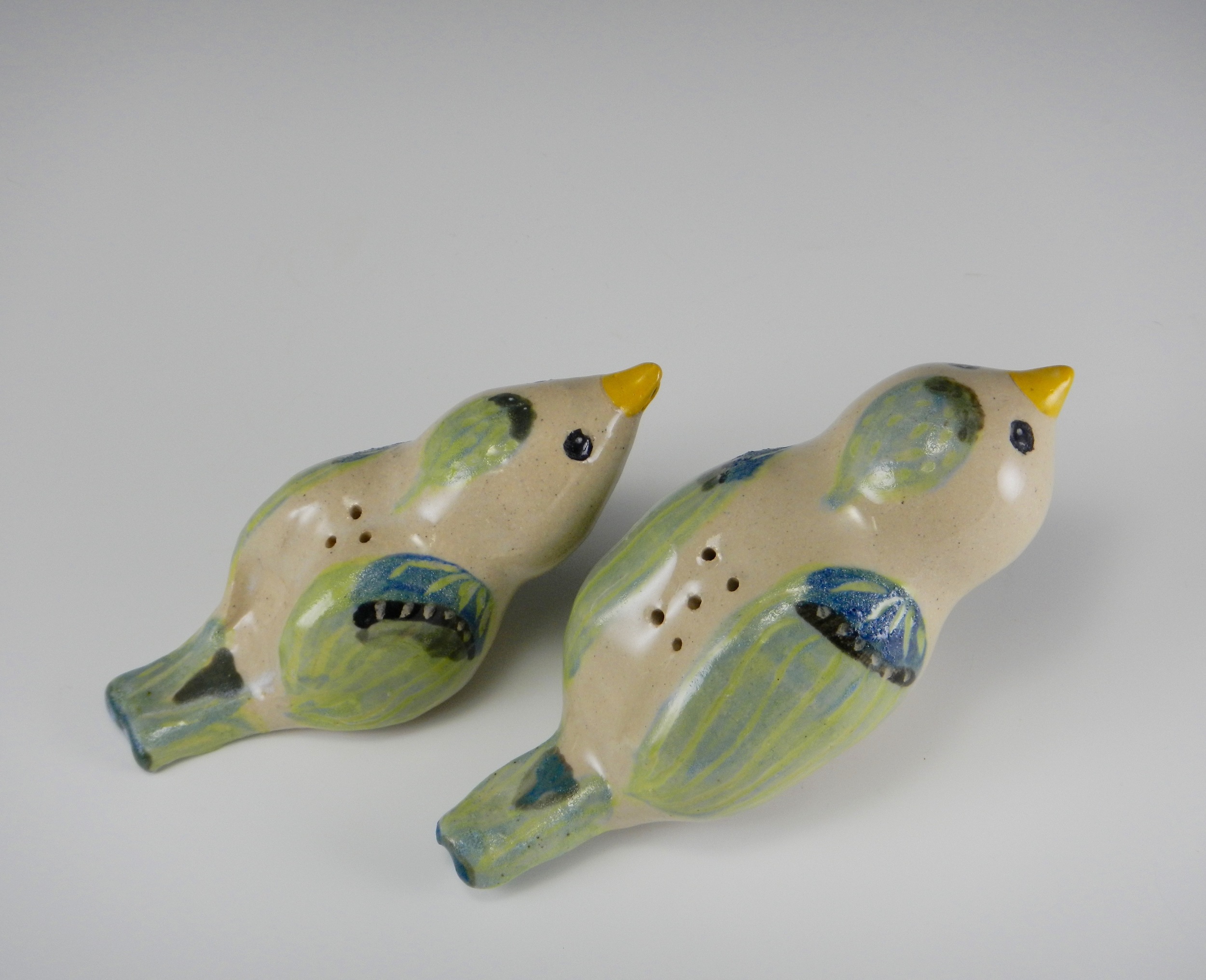I have various ways of making a living as a potter. I teach in my studio, do "date nights at the pottery", do "'girls' night out" there too, do an outside gig teaching once in a great while when asked, sell a bit from my website (especially at holidays but also in wedding season), and sell a bit from my home/studio gallery. Another, admittedly minor way, is doing one-day shows.
Back on July 21st, 2016, I blogged about how I was Done Kissing Frogs, as I thought of these small local shows. Yet I did this little show last month despite all. That does seem incongruous. So I guess I really owe us (or at the very least, myself) a breakdown of the event.
The old expression "Let's get down to brass tacks" means looking at the bottom line and seeing the tangibles. The bottom line here, however, may be a little wavier and intangible than you would think.
Facts: Sunday show near NYC, one hour or so away. My second year there.
Hours spent just on show related work- 18 total (NOT INCLUDING MAKING THE OBJECTS; I take this into account when I price the work):
-Creating an inventory list/Doing Price stickers
-Wrapping up and packing the work/Loading the car
-Traveling to the show
-Setting up
-Manning the show- standing, walking around the room, talking to people, making sales, wrapping pots- the things one does to man ('woman'?) a show, which was just 4 hours' duration in this case
-Breaking down/Repacking the work/Loading the car
-Traveling from the show, home
-Unpacking at the home gallery/Re-stowing packing materials
-Returning work to the gallery shelves
-Bookkeeping/Banking/Assessing how to improve the show possibilities
-Follow-up emails after the show, with coupon toward further purchases online
Bearing all of the above in mind, and not putting monetary value on these for the moment, add in the $$$ made in four hours of actual showtime:
-Sold +$280
Gave back 15% cut to sponsoring organization -$42
Other expenses: Gas and tolls estimate - -$25
Raffle donation item value- -$23
Total deduction from 3 items above= $90
-My real take-home before taxes: +$280-$90= $190
In addition, I discussed a potential custom order for $165, which may raise my take-home to $355.
In essence, I worked pretty hard to make perhaps $165 and perhaps $355. I do want to point out that that is $165 or $355 I would not have made by staying home that day instead. To be even clearer, I have found that these 4-hour gift shows rarely generate more than $400 in sales for me, and other potters whose work is wonderful have told me the same. When the higher-end jeweler next to me asked at the end of the 4 hours, "Did you make $1000?" I just said no, but inside I had a small dry laugh. My husband quotes his mother, who had a head for business, "If you sell pins, at the end of the day you're left with pins. If you sell diamonds, at the end of the day you're left with diamonds." Until I am a national name (or at least until I am an even moderately popular regional one) as an artist, I make pottery, not high end jewelry. Not quite pins- it is an art form (all philosophical discussion of art vs craft aside)- but also, not (yet) it isn't diamonds.
To contrast costs, the jeweler's initial outlay for materials is much greater than mine since she uses semiprecious stones, gold and silver. Clay is very cheap in comparison. In her case, the work is mostly beaded and not actually formed in metals from scratch, so the making of a piece might be roughly similar in expenditure of time to me making one of my pieces. But my outlay of time is much greater in dealing with the show itself. For example, I don't just roll it all up carefully in a cloth in 5 minutes at the end of the day and stack up my paper stands, leaving with less than 10 lbs of stuff on one handcart as I waved a breezy goodbye. At my space, just packing up afterward took an hour and a quarter, and I had 6 heavy boxes to trundle out to my car long after she and her assistant (hmm, what is an 'assistant'?) had hit the road. Setting up had also been quite unequal; mine had taken over an hour and hers, 10 minutes.
But added to this negative assessment is one pretty valuable intangible this time, which is something I am not used to saying. And it's why I'm not sorry I Kissed This Frog. Because of well-considered thoughts from a good, very selective repeat customer at this show, I had a small but real paradigm shift. I formulated a bit of a change in strategy for what I bring and how to set up the next gift show- and 1-day shows in general. This is worth a lot.
For example- 'I love that color blue', she told me. 'But I won't buy that goblet until I see other goblets next to it, and can make a choice.' Likewise, she declined to buy a tureen she was noticing (actually a nice size for soup or stew for two), although she liked the idea. 'Too small to really use for much,' she said. 'If you had that in other sizes I would buy one.' Thinking that over a couple of weeks after, while shopping at a large armory craft show with lots of artists and customers (and where I bought one of my kids a beautiful handmade travel guitar), I verified her words when I looked at the booth of a well-stocked potter with work qualitatively akin to mine. I saw the wisdom in my customer's opinions. A shelf unit of mugs had a couple of dozen similar mugs- in different colors and side by side. Bowls were similarly displayed, in a few sizes, and so on. Items generally similar in feeling but in different colors and sizes were shown. If I liked what I saw, I could choose easily.
I believe I will even do this little show again- don't shake some sense into me, please. I want to test the waters again there. Call it a mini semi-longitudinal test case. Besides the intangible benefit of getting out of the studio and talking to folks (nothing to sneeze at in the fairly solitary life of a potter), these constructive ideas are also sharpening my focus towards making particular objects in a more organized way. These are not new things- I want to keep making them anyway-- I'll just stick with them longer, and make more variations in colors and sizes on each single theme. I'll still make one-offs because I love to. But they will be in addition.
And I am also going to reach out to the organizer to help make this particular show better. I have more ideas about publicity and marketing.
The things I gleaned will affect whatever shows I do, including wholesale gift (when the Saturday night/Sunday-only (usually Judaica) ones come up). The simple schooling was worth much more than the $190 I made or the $355 I might make. Only by showing my work, even at the (very) occasional Kiss-a-Frog show like this, can I get a certain kind of cogent feedback.
More on that feedback, or How to Set Up a More Appealing and Lucrative Show, in a future post.















